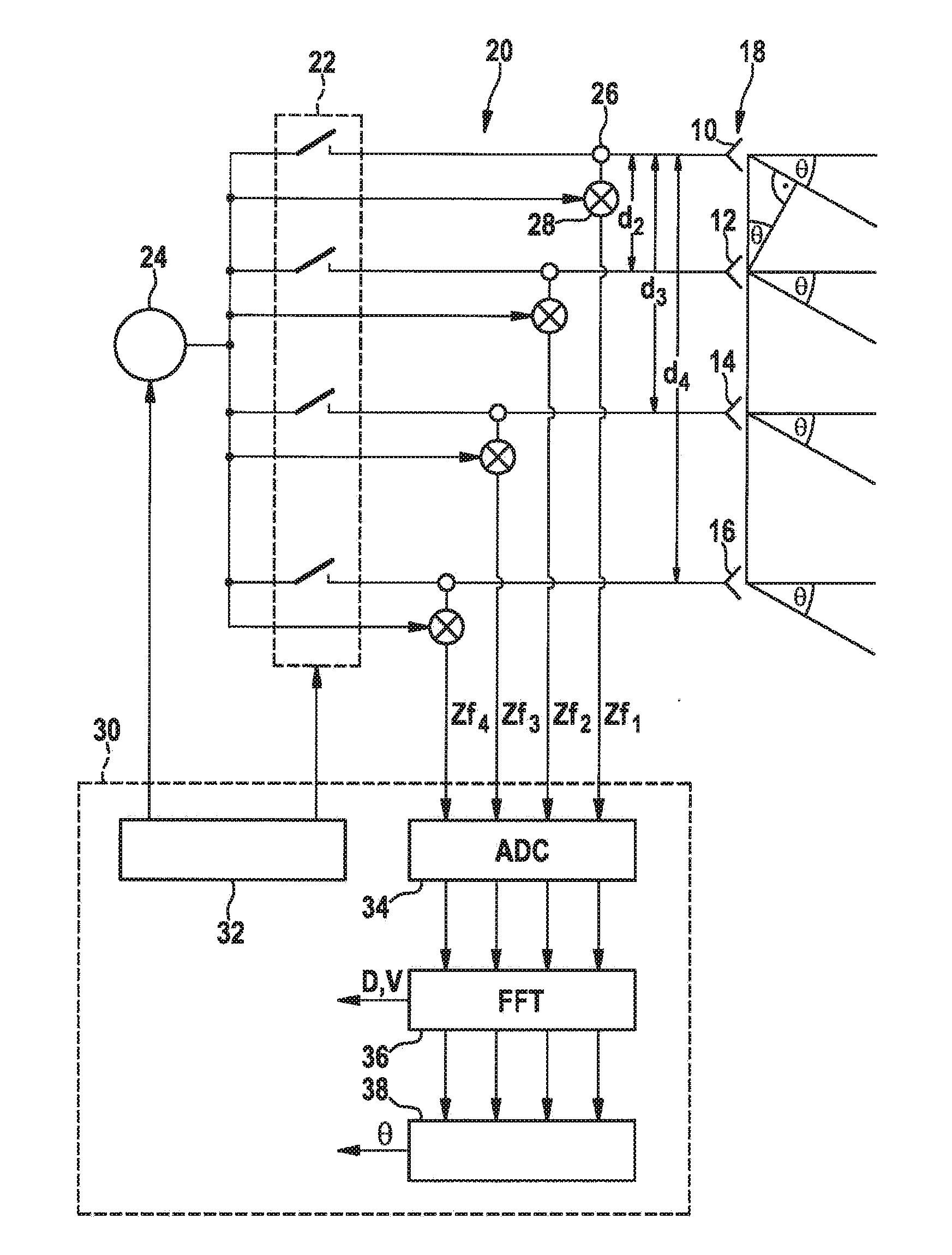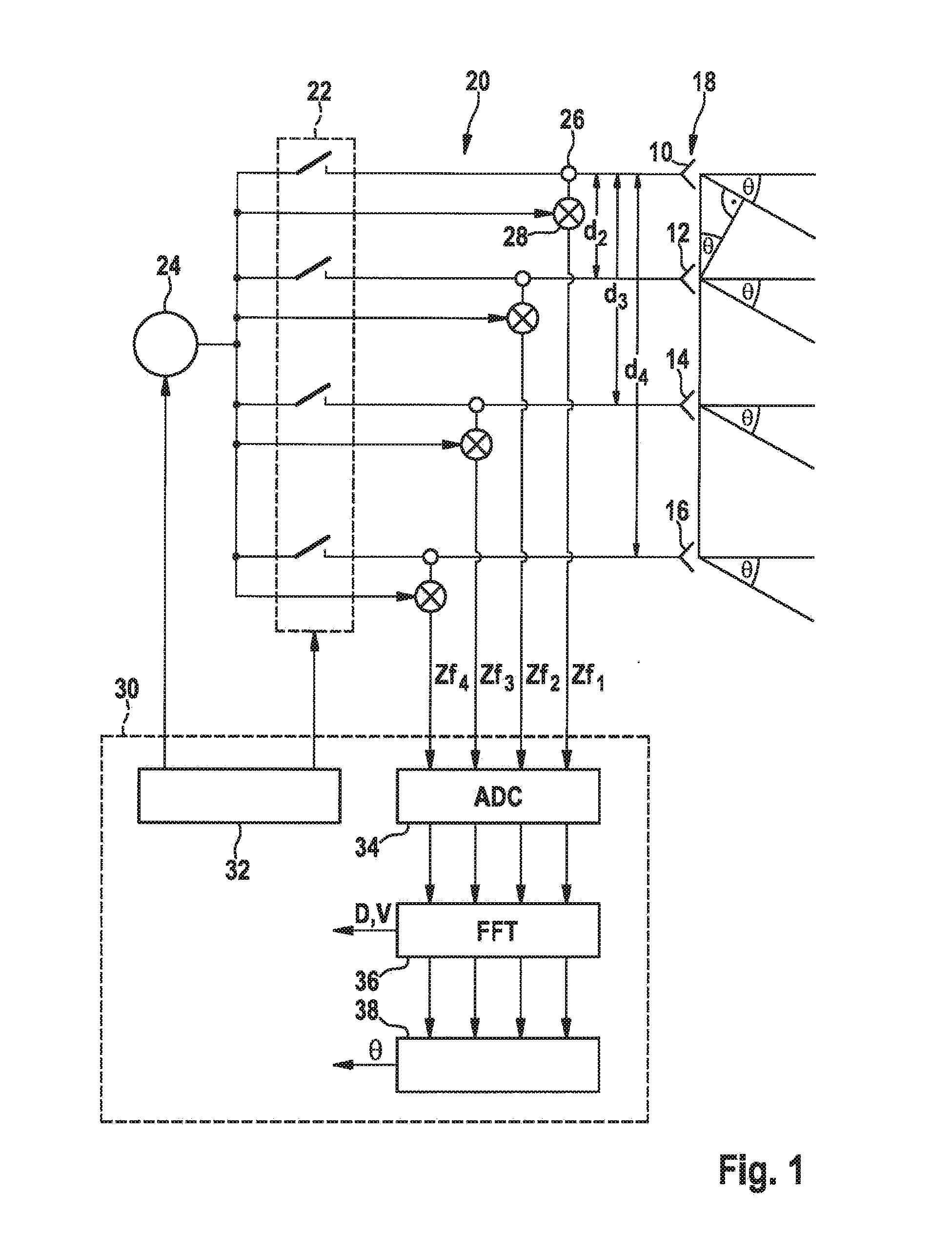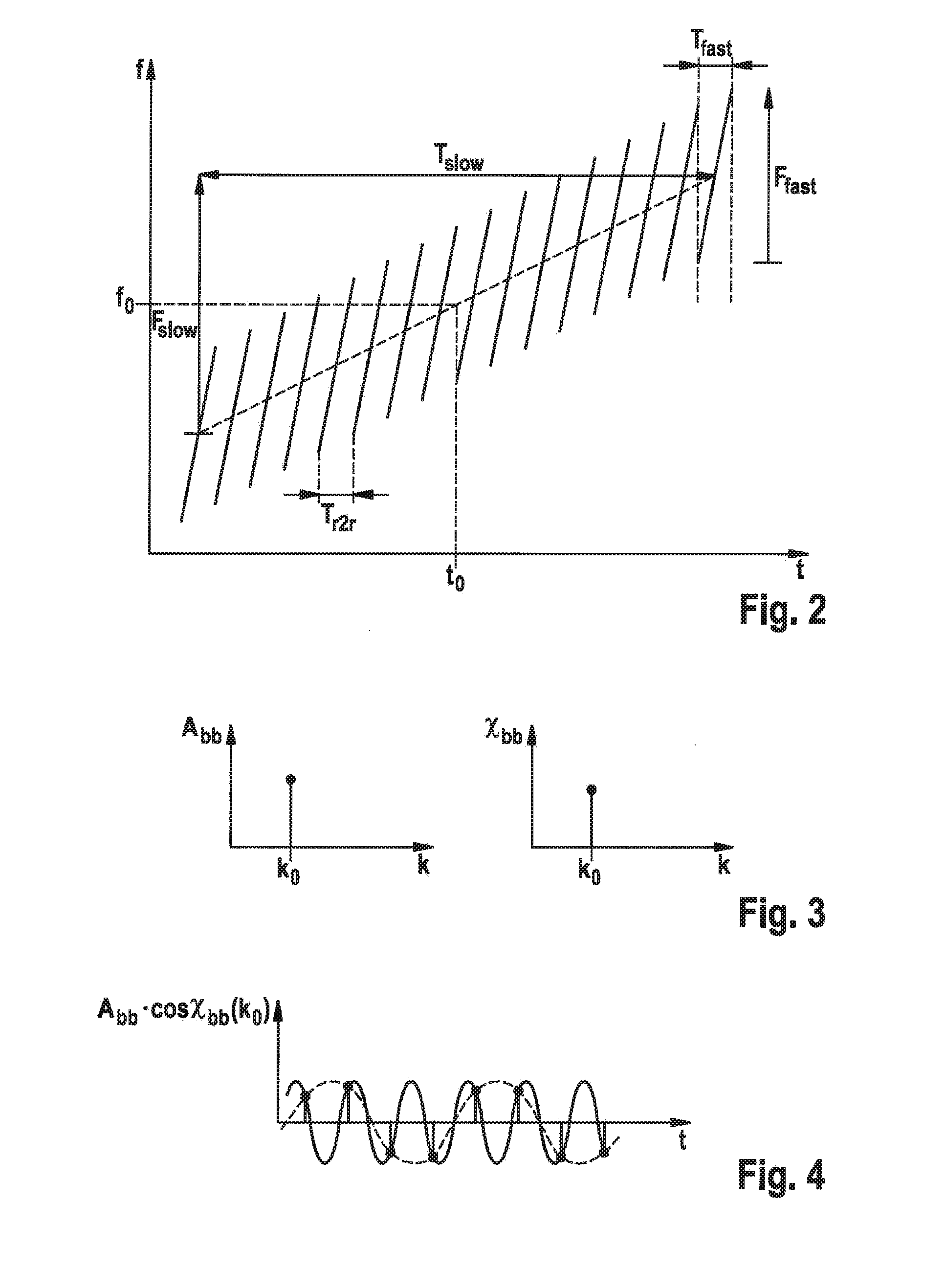Angle-resolving fmcw radar sensor
a radar sensor and angle resolution technology, applied in the field of angle resolution of fmcw radar sensor, can solve the problems of high hardware cost, inability to meet the requirement of unambiguousness, and possible angular measurement ambiguities,
- Summary
- Abstract
- Description
- Claims
- Application Information
AI Technical Summary
Benefits of technology
Problems solved by technology
Method used
Image
Examples
Embodiment Construction
[0039]The radar sensor shown in FIG. 1 includes four antenna elements 10, 12, 14, 16, which together form a planar group antenna 18. The radar sensor is installed in a motor vehicle in such a way that antenna elements 10 through 16 are situated next to one another at the same level, so that an angular resolution capability of the radar sensor in the horizontal (in the azimuth) is achieved. FIG. 1 symbolically illustrates radar beams which are received by the antenna elements at an azimuth angle θ.
[0040]A high frequency portion 20 for controlling the antenna elements is formed, for example, by one or multiple monolithic microwave integrated circuits (MMICs), and includes a switching network 22 via which the individual antenna elements are selectively connectable to a local oscillator 24 which generates the radar signal to be transmitted. The radar echoes received by antenna elements 10 through 16 are each decoupled with the aid of a circulator 26 and supplied to a mixer 28, where the...
PUM
 Login to View More
Login to View More Abstract
Description
Claims
Application Information
 Login to View More
Login to View More - R&D
- Intellectual Property
- Life Sciences
- Materials
- Tech Scout
- Unparalleled Data Quality
- Higher Quality Content
- 60% Fewer Hallucinations
Browse by: Latest US Patents, China's latest patents, Technical Efficacy Thesaurus, Application Domain, Technology Topic, Popular Technical Reports.
© 2025 PatSnap. All rights reserved.Legal|Privacy policy|Modern Slavery Act Transparency Statement|Sitemap|About US| Contact US: help@patsnap.com



